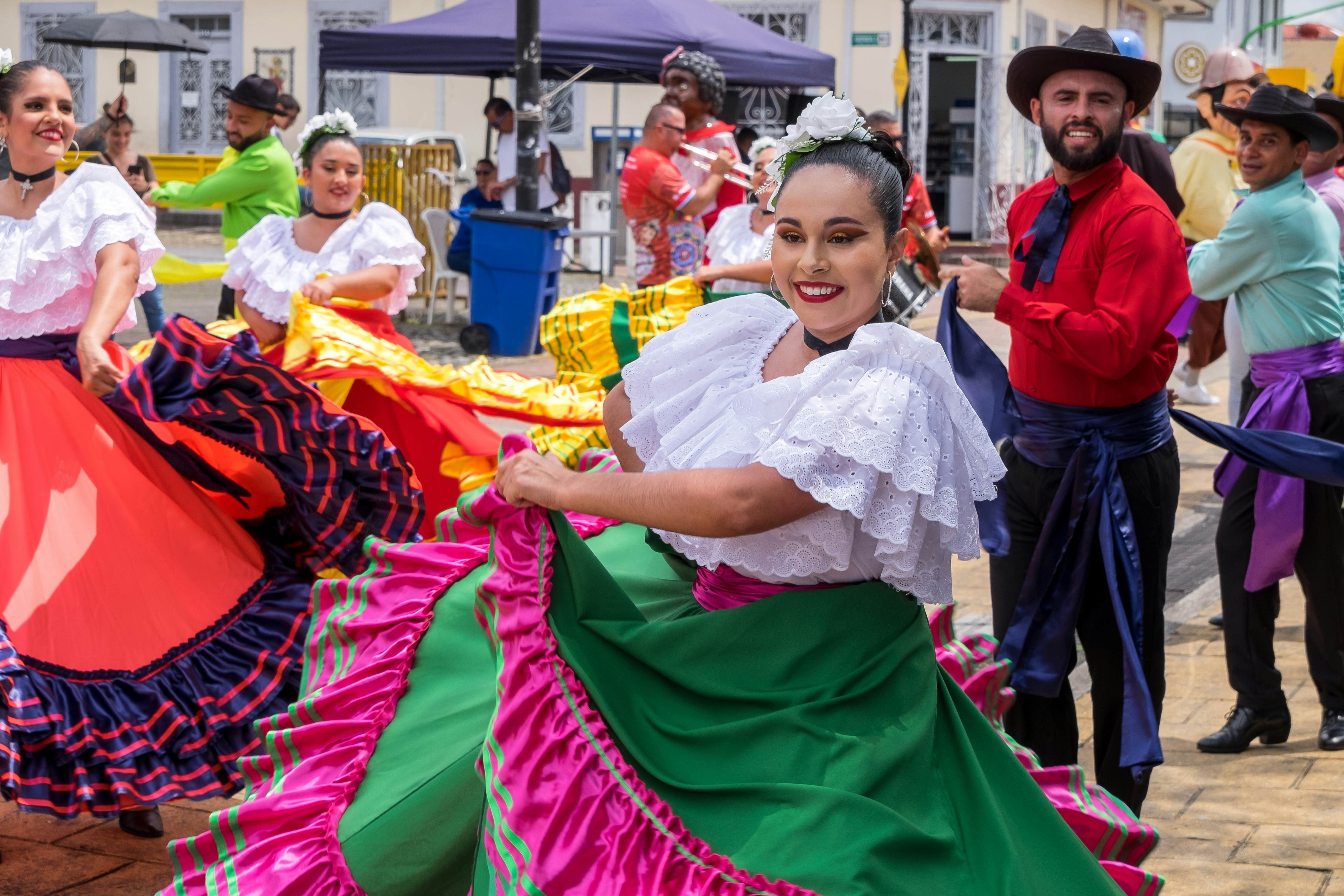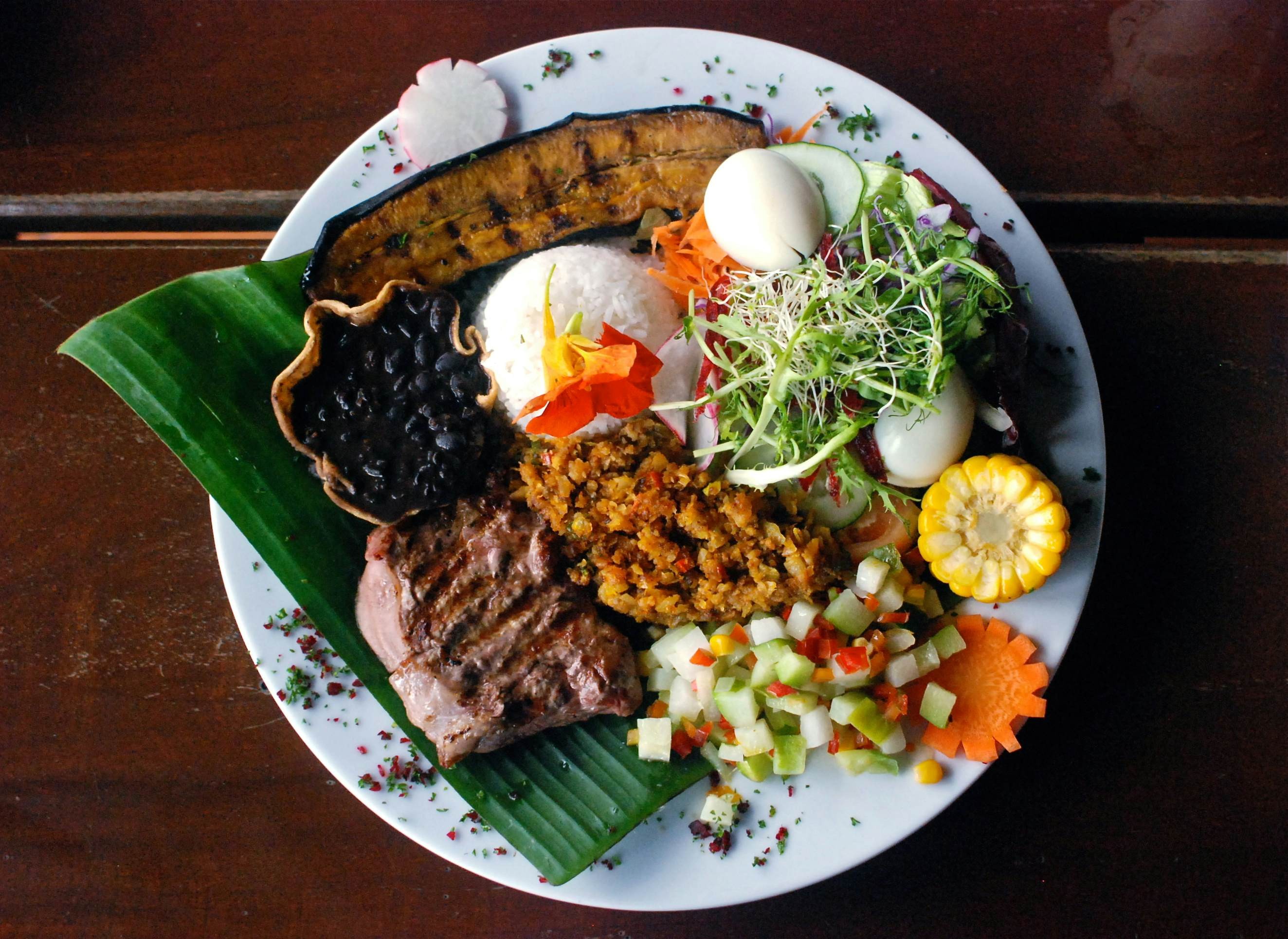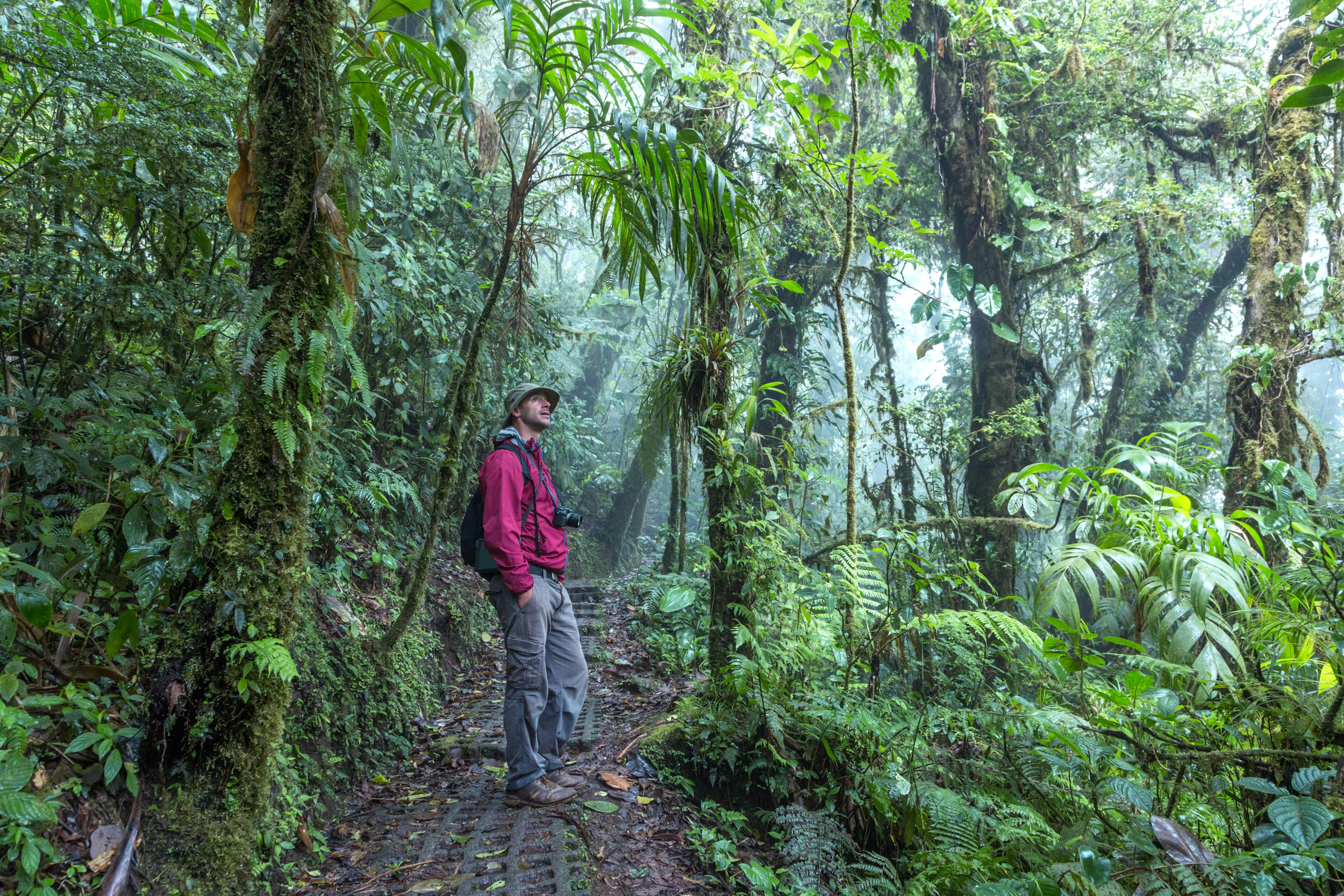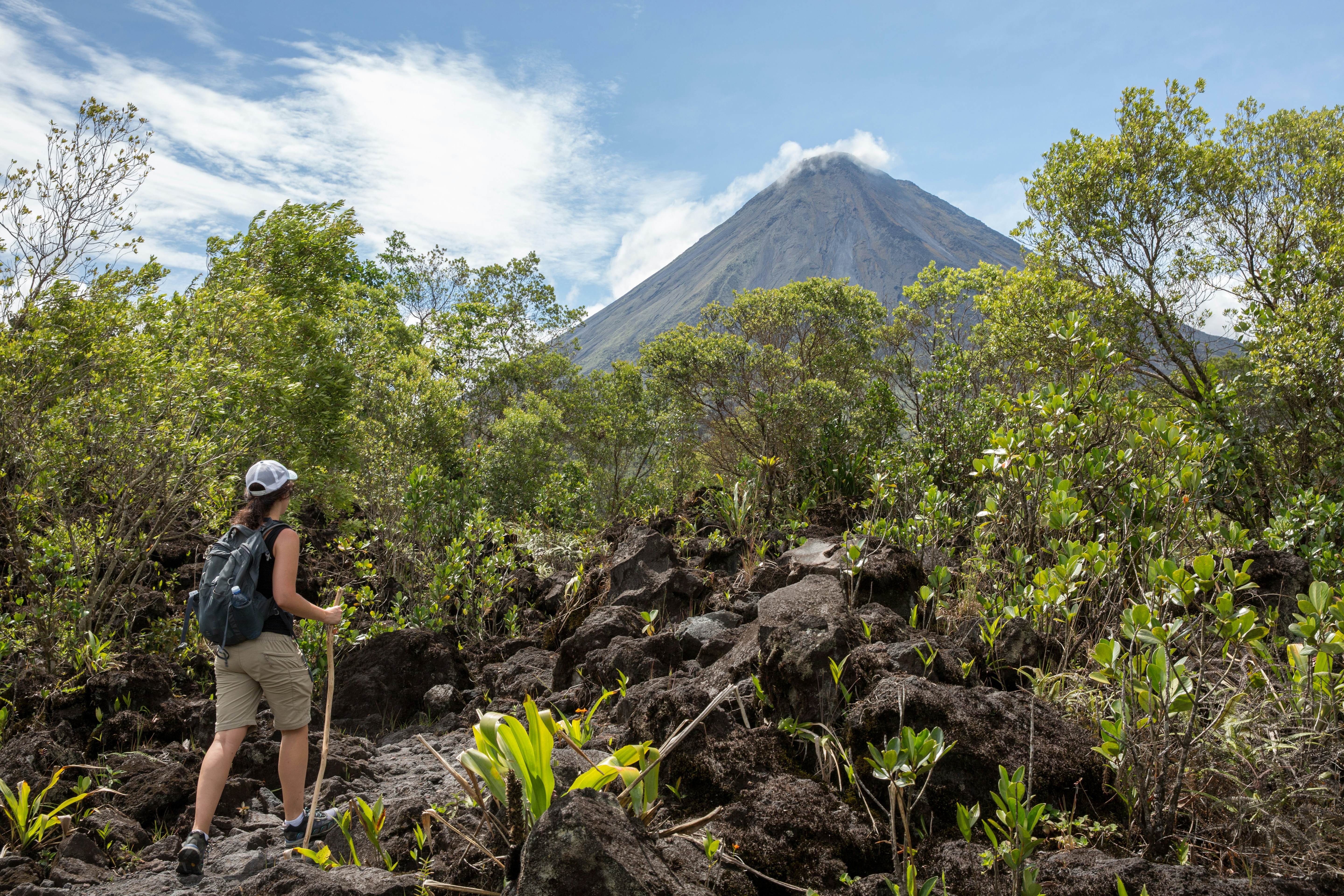What To Know When Traveling To Costa Rica? SIXT.VN provides expert travel advice and services to ensure a smooth and unforgettable trip to Costa Rica, focusing on essential aspects like safety, local customs, packing tips, and navigating the country. With our guidance, you’ll be well-prepared to explore Costa Rica’s stunning beaches, lush rainforests, and vibrant culture, making your vacation truly special. Travel preparation is key.
1. How Much Time Do You Need In Costa Rica For Travel?
You can experience a lot in Costa Rica even if you only have a week. While weeks could be spent exploring the country’s diverse offerings, a well-planned shorter trip can still be incredibly rewarding. If you’re visiting from the USA, even a long weekend can give you a taste of what Costa Rica has to offer. However, keep in mind that travel times between destinations can be longer than expected.
For those with limited time seeking memorable outdoor adventures, La Fortuna and the Arenal volcano or the dense forests of Monteverde are excellent choices. If a beach vacation is your priority, flying into Liberia, which is closer to the Pacific Coast beaches, is more convenient than flying into San José. On the Pacific shore, you can combine surfing and jungle adventures in as little as a week. If you have more time, consider exploring the biodiverse Osa Peninsula or the wild beaches along the Caribbean coast.
 Diver with a large shoal of jacks at Cocos Island, Costa Rica
Diver with a large shoal of jacks at Cocos Island, Costa Rica
2. What Are The Seasons Like And What To Pack For Travel?
Costa Rica officially has two seasons: the dry season and the rainy season. The dry season runs from December to March, with the hottest temperatures, around 35°C (95°F). The rainy season is from May to November, with the wettest months being September and October.
However, Costa Rica has various microclimates, so pack accordingly. Rainforest trails tend to be hot and humid, but the cloud forests can be quite chilly.
Pack T-shirts, shorts, flip-flops, a raincoat, a fleece or warm jacket, waterproof hiking boots, closed-toe hiking sandals, a rash guard, and lightweight, quick-dry clothing. Also, bring a dry bag or waterproof gear to protect your valuables, as rain can arrive unexpectedly. Don’t forget high-factor, water-resistant sunscreen and bug spray.
3. How To Plan Ahead When Traveling At Peak Times?
If you plan to travel to Costa Rica during peak times, such as Christmas, New Year, Easter, or US spring break, book your accommodations well in advance. Prices tend to increase during major festivals and events, and popular tours and high-end restaurants should also be booked in advance.
Booking in advance can save you money and ensure you get the best possible options for accommodations and activities. According to Booking.com, booking your stay at least three months in advance can save up to 20% on accommodations. This is particularly crucial during peak seasons when demand is high.
 Folk group parading through the urban center of San Jose, Costa Rica.
Folk group parading through the urban center of San Jose, Costa Rica.
4. What Is The Best Way To Carry Money While Traveling?
While traveling in Costa Rica, it’s best to carry a mix of cards and cash. The official currency is the colón, but US dollars are widely accepted. Having a stash of small bills is useful for tipping, taxis, small shops, and local restaurants. Credit and debit cards can be used for most other expenses.
According to a survey by Visa, carrying both cash and cards can provide flexibility and security while traveling. Cash is convenient for small transactions and places that may not accept cards, while cards offer security and ease of tracking expenses.
5. Is Tipping Customary In Costa Rica While Traveling?
Tipping is optional in Costa Rica, but it is always appreciated, especially by hardworking guides and drivers. A tip of around 10% of the tour price is a good guideline, or more if the service is exceptional. Restaurants usually add a 10% service tax and a 13% sales tax to the bill, but you can add an extra tip if you feel the service was outstanding.
According to TripAdvisor, tipping is a common way to show appreciation for good service in the tourism industry. While not mandatory, a small tip can make a big difference to service workers.
 Plate of casado – the typical Costa Rican lunch of rice, beans, plantains and meat.
Plate of casado – the typical Costa Rican lunch of rice, beans, plantains and meat.
6. How Important Is It To Know Spanish While Traveling?
English is widely spoken in Costa Rica, but knowing some Spanish can greatly enhance your experience. Using polite phrases will be met with smiles from locals. It’s useful to learn phrases like buenos días (good morning), por favor (please), and gracias (thank you).
Another useful phrase is pura vida, which can be used to say everything from “hello” and “goodbye” to “what’s up?” or “that’s great.”
A study by the Costa Rican Tourism Board showed that tourists who made an effort to speak Spanish had more positive interactions with locals and a more immersive cultural experience.
7. How To Respect The Flora And Fauna While Traveling?
Costa Rica is renowned for its biodiversity, housing about 5% of the world’s plant and animal species. Approximately 28% of its land is protected. Locals take conservation seriously, and the country generates 99% of its electricity from renewables, aiming to be carbon neutral by 2050.
Support sustainable practices by choosing lodgings with the Certification of Sustainable Tourism, traveling with ethical tour guides, and eating local. Maintain a distance from wild animals, using a zoom lens or binoculars for closer views. Costa Rica launched a #stopanimalselfies campaign, so avoid photo opportunities with animals. National parks ban single-use plastics, so bring a reusable water bottle.
 Man walking on a trail in the green rainforest, Monteverde Cloud forest, Puntarenas, Costa Rica
Man walking on a trail in the green rainforest, Monteverde Cloud forest, Puntarenas, Costa Rica
8. How Safe Is Costa Rica For Travel?
Costa Rica is generally a safe place to visit, but petty crime can occur. Take standard precautions and avoid flashing expensive items. Don’t carry all your credit cards together, and use ATMs inside banks during the daytime. Foreign visitors should carry their passports, but a photocopy is often accepted by the police.
Be aware of pickpockets in crowded areas like bus stations and markets, and watch your belongings on buses and beaches. Avoid poorly lit streets and wandering alone in questionable neighborhoods after dark. In bars and clubs, don’t leave your drink unattended. Call 911 in an emergency.
According to the U.S. State Department, being aware of your surroundings and taking basic safety precautions can minimize risks while traveling in Costa Rica.
9. Is It Safe To Climb Arenal Volcano While Traveling?
Climbing the Arenal Volcano is prohibited unless you are a volcanologist with a permit. Although the volcano is currently in a resting phase, climbing it is illegal and can result in a fine.
Instead, hike the lava-covered lower slopes on various trails or participate in activities in the surrounding national park. Enjoy mountain biking, horseback riding, rappelling, ziplining, kayaking, and windsurfing on nearby Lake Arenal, and relax in the region’s natural hot springs.
The Arenal National Park website provides detailed information on safe and permitted activities within the park.
 Woman hiking the Arenal 1968 Trail, Costa Rica, in front of the Arenal volcano
Woman hiking the Arenal 1968 Trail, Costa Rica, in front of the Arenal volcano
10. How To Stay Healthy And Avoid Bug Bites While Traveling?
Costa Rica has a highly-rated healthcare system, but you must pay for treatment, so travel insurance with medical coverage is recommended. Malaria is rare, but mosquitoes can transmit diseases like dengue and Zika, especially in low-lying urban and coastal areas.
Use insect repellent with at least 20% DEET, cover bare skin, especially in the evenings, to avoid bug bites.
The World Health Organization recommends using insect repellent and wearing protective clothing to minimize the risk of mosquito-borne diseases.
11. How To Stay Safe In The Surf While Traveling?
Costa Rica is a popular surfing destination with year-round waves along the Pacific Coast. Playa Hermosa on the Nicoya Peninsula was declared Central America’s first World Surfing Reserve in 2022.
However, rip currents are common, and lifeguards are not always present. Watch for warning flags: a red flag indicates a danger zone, and black means stay out of the water. Don’t swim or surf alone. If a current pulls you out to sea, stay calm, shout for help, and swim parallel to the shore to escape the current. Always ensure rivers and lagoons are crocodile-free before entering.
The International Surfing Association advises checking local conditions and heeding warning signs before entering the water.
 Surfer in front of the setting sun at Playa Carmen in Costa Rica
Surfer in front of the setting sun at Playa Carmen in Costa Rica
12. What To Be Cautious Of On The Roads While Traveling?
Renting a car in Costa Rica provides the flexibility to travel at your own pace, but keep a few things in mind. Most rental agencies require comprehensive insurance in addition to mandatory liability insurance. A 4WD vehicle is necessary for tackling dirt roads. Inspect the vehicle’s condition and ensure it has safety equipment, including a functional spare tire.
Drive slowly and defensively. In case of a breakdown, contact the rental company or 911; avoid accepting help from strangers. Never leave valuables in your car, and use public parking lots with surveillance. Road trips can take longer than expected, so plan to avoid driving after dark.
According to the Costa Rican Department of Transportation, defensive driving and proper vehicle maintenance are crucial for safe road travel.
13. Is Tap Water Safe To Drink While Traveling?
Staying hydrated is important in Costa Rica’s heat and humidity. Tap water is generally safe to drink. However, if traveling to remote rural areas or to avoid risk, use a water filter bottle like the LifeStraw Go.
The U.S. Centers for Disease Control and Prevention (CDC) advises that while tap water is generally safe in Costa Rica, using a water filter can provide an extra layer of safety, especially in rural areas.
14. What Unique Experiences Should I Include In My Costa Rica Travel Itinerary?
Costa Rica offers many unique experiences. Consider visiting the Sloth Sanctuary near Limón to learn about and observe these gentle creatures. Explore the cloud forests of Monteverde, known for their biodiversity and stunning views. Visit the coffee plantations in the Central Valley to learn about coffee production and sample local brews.
According to National Geographic, these unique experiences provide deeper insights into Costa Rica’s culture and natural beauty.
15. How Can I Respect Local Customs And Traditions When Traveling?
Respecting local customs enhances your travel experience. Greet people with a handshake and a smile. Dress modestly when visiting religious sites. Learn a few basic Spanish phrases to show respect and facilitate communication.
The Costa Rican Ministry of Culture emphasizes that respecting local customs fosters positive interactions and enriches the travel experience.
16. What Role Does SIXT.VN Play In Ensuring A Smooth Travel Experience To Costa Rica?
SIXT.VN offers a range of services to ensure a seamless travel experience to Costa Rica, including personalized travel itineraries, reliable airport transfers, hotel booking assistance, guided tours to popular attractions, and flight booking services. We focus on making your journey convenient, enjoyable, and memorable. With SIXT.VN, you can focus on experiencing the best of Costa Rica without the stress of planning.
Why Choose SIXT.VN for Your Costa Rica Trip?
- Personalized Itineraries: Tailored to your interests and schedule.
- Airport Transfers: Safe and reliable transportation upon arrival.
- Hotel Booking: Handpicked accommodations to suit your preferences.
- Guided Tours: Expert-led excursions to top attractions.
- Flight Booking: Convenient and affordable flight options.
17. What Are Some Sustainable Travel Practices I Should Consider In Costa Rica?
To travel sustainably in Costa Rica, choose eco-friendly accommodations with sustainability certifications, use reusable water bottles, support local businesses, and minimize your environmental impact by properly disposing of waste and respecting wildlife. Opt for tours that prioritize conservation and community benefits.
The Global Sustainable Tourism Council emphasizes the importance of choosing certified accommodations and tours to minimize environmental impact.
18. What Are The Key Entry Requirements And Visa Information For Costa Rica Travel?
For entry into Costa Rica, you generally need a valid passport with at least six months of validity, a return or onward ticket, and proof of sufficient funds for your stay. Many nationalities can enter Costa Rica without a visa for tourism purposes, typically for up to 90 days. Check the specific requirements based on your nationality before traveling.
The Costa Rican Immigration Authority provides up-to-date information on visa requirements and entry regulations.
19. What Are Some Popular Dishes I Should Try While Traveling In Costa Rica?
When traveling to Costa Rica, be sure to try some popular local dishes. “Gallo Pinto” (rice and beans) is a staple breakfast, while “Casado” is a hearty lunch with rice, beans, plantains, meat or fish, and salad. “Ceviche” (marinated raw fish) is a refreshing option, and “Arroz con Leche” (rice pudding) is a traditional dessert.
According to food blogs like “The Costa Rica News,” trying local cuisine is an essential part of experiencing Costa Rican culture.
20. How Can I Prepare For The Climate And Weather Conditions In Costa Rica Travel?
To prepare for Costa Rica’s climate, pack light, breathable clothing, rain gear, and sunscreen. Be aware that the weather can vary significantly depending on the region and altitude. The dry season (December to April) is generally hot and sunny, while the rainy season (May to November) can bring daily showers.
The Costa Rican Meteorological Institute provides detailed weather forecasts and climate information to help you prepare for your trip.
By understanding what to know when traveling to Costa Rica, you can ensure a safe, enjoyable, and unforgettable experience. SIXT.VN is here to assist you in planning every aspect of your trip, from transportation to accommodations and guided tours. Contact us today to start planning your dream vacation to Costa Rica!
Contact Us
- Address: 260 Cau Giay, Hanoi, Vietnam
- Hotline/Whatsapp: +84 986 244 358
- Website: SIXT.VN
FAQ: What To Know When Traveling To Costa Rica
1. Is Costa Rica safe for solo female travelers?
Yes, Costa Rica is generally safe for solo female travelers. However, it’s important to take standard safety precautions, such as avoiding walking alone at night and keeping valuables secure.
2. What vaccinations are recommended for Costa Rica travel?
It is recommended to have routine vaccinations up to date. Consult your doctor or a travel clinic for personalized advice, as some vaccinations may be recommended depending on your travel plans.
3. How can I get around in Costa Rica?
You can get around Costa Rica by renting a car (4WD recommended for rural areas), using public buses, hiring private shuttles, or taking domestic flights.
4. What is the best time to visit Costa Rica?
The best time to visit Costa Rica is during the dry season (December to April) for sunny weather. However, the rainy season (May to November) offers lush landscapes and fewer crowds.
5. What should I pack for a trip to Costa Rica?
Pack light, breathable clothing, rain gear, insect repellent, sunscreen, hiking shoes, a hat, and a reusable water bottle.
6. What currency is used in Costa Rica, and should I exchange money before traveling?
The official currency is the Costa Rican Colón (CRC), but US dollars are widely accepted. It’s not necessary to exchange a large amount of money before traveling; you can use ATMs or exchange currency upon arrival.
7. Are credit cards widely accepted in Costa Rica?
Yes, credit cards are widely accepted in tourist areas, but it’s a good idea to carry some cash for smaller establishments and rural areas.
8. Do I need to speak Spanish to travel in Costa Rica?
While English is spoken in tourist areas, knowing some basic Spanish phrases will enhance your experience and be appreciated by locals.
9. What are some popular tourist attractions in Costa Rica?
Popular attractions include Arenal Volcano, Monteverde Cloud Forest, Manuel Antonio National Park, and the beaches of the Nicoya Peninsula.
10. How can I be an eco-friendly traveler in Costa Rica?
Support local businesses, choose eco-friendly accommodations, use reusable water bottles, properly dispose of waste, and respect wildlife to be an eco-friendly traveler in Costa Rica.



